Playing With Latin Verbs
If you've spent any time studying languages, you most likely agree that verbs have the power to humble an eager linguist. As English speakers, we often don't realize the complexity of meaning that each verb holds, and therefore, rarely understand the fullness a tiny little word can contain.

In Cycle 2 in the Foundations program of Classical Conversations, we memorize Latin conjugations - or how verb endings change to express person, number, voice, mood, and tense. When the Challenge students encounter verbs, the complexity is compounded if they do not know these details about English verbs. Often, they find themselves guessing, when the beauty of the Latin language lies in the precision by which a verb is constructed, presenting all of the information clearly if one knows where to look.
Ok - Verbs. What's the big idea?
While Latin nouns have three areas of focus (gender, number and case), Latin verbs have five elements to attend to: person, number, voice, mood, and tense.
- There are three options for person: 1st (speaker), 2nd (spoken to), and 3rd (spoken about). If you'll remember from your grammar studies, these refer to the personal pronouns: I, you, he/she/it, we, y'all, they.
- Closely related to person, verbs also have two options for number: singular and plural. A verb will match the subject in number and person. The dog runs (singular). The dogs run (plural).
- Next comes the two options for voice: active or passive. The boy hit the ball (active - the subject is doing the action). The boy was hit by the ball (passive - the action is being done to the subject).
- Then there are three possibilities for mood: indicative (stating a fact), subjunctive (a wish, hope, or possibility), and imperative (a command). Beginner usage of verbs remains in the indicative mood, so that's what I'll start with here.
- Finally, there are six tenses: present (I play), imperfect (I was playing), future (I shall play), present perfect (I have played), pluperfect (I had played), future perfect (I shall have played).
If this information is overwhelming, this is a good time to pull out a handy-dandy chart and start copying. If you're in the Essentials program, I hope you recognize that copying the verb charts will be an invaluable tool for deeper grammar studies in Latin. Whether you understand these terms or not, memorizing the endings clears up space in your brain to focus on the concepts. Here are some FREE verb charts to get you started!
When the aspects of verbs become more familiar, conjugating verbs in Latin will not be nearly as overwhelming.
Copy charts . . . got it. What else is there?
Just like Latin nouns, Latin verbs are grouped into families that change in the same way. These are the four conjugations.
You can identify which conjugation a verb belongs to by looking at the ending of the 2nd principal part.
Four conjugations, four principal parts . . . What do I do with them?
Since the second principal part of the verb in the picture above ends in "-are" it would belong to the first conjugation. Let's go back to the basic memory work for Latin conjugations.
There are two stems for verbs - The present system that gives you the present, imperfect, and future forms:
The perfect system that gives you the present perfect, pluperfect, and future perfect forms: Once you have these memorized, you can begin to see patterns.
Back to playing - How do I play with verbs?
Check out the charts that I developed with my son. If you start copying these charts, you will soon see that as overwhelming as it seems, there are so many things that repeat, or are very similar, and the truth will come to life before your eyes. You will also see that to truly utilize a verb in Latin you must memorize the four principal parts of every verb you encounter. The chart tells you which part to use for each tense/mood/voice.
-
Product on sale
 Latin Declensions & Conjugations Mastery ChartsOriginal price was: $15.00.$10.00Current price is: $10.00.
Latin Declensions & Conjugations Mastery ChartsOriginal price was: $15.00.$10.00Current price is: $10.00.
Verbs are so complex that often students are afraid to play with them. If you're looking for a gentle way to introduce your grammar stage kids to verbs in Latin, stick to the most basic forms until they become effortless, then add another aspect.
- Memorize the conjugation endings from the present, imperfect, and future tenses.
- Memorize the four principal parts of a couple of 1st conjugation verbs (here's a list of the vocabulary from the Henle book)
- Conjugate your memorized verbs in the present tense until it becomes easy.
- Conjugate your memorized verbs in the imperfect tense until it becomes easy.
- Conjugate your memorized verbs in the future tense until it becomes easy.
- Memorize the conjugation endings from the present perfect, pluperfect, and future perfect tenses.
- Conjugate your memorized verbs in the present perfect tense until it becomes easy...
You get the picture. It is the same thing as practicing dribbling a basketball or swinging a baseball bat. You can make these activities tedious or enjoyable. That part is up to you!
Learn Verbs through Latin with Andy Code Breakers
If you feel like you need more help with your English grammar to be able to tackle Latin grammar, Andy's Code Breakers series is a great place to start!
Latin with Andy Code Breakers is our way to help you along in really understanding the foundational elements of Latin—including verbs! It's a great way to ease yourself into verb translations before tackling the Henle Latin series.
The best part about Code Breakers is that all of the videos are FREE to watch on YouTube, or you can find them all organized here!
It also comes with free video companion guides, perfect for taking notes as Andy walks you through the fundamentals of the Latin language.
More Latin Helps
Check out some of our other great Latin resources!
Dive Deep into Verbs through the Latin with Andy Resource Library
If you'd like to really dig deep into how verbs work (and the rest of the Latin language), Andy and I have created an entire video resource library that will walk you step-by-step through middle school and high school Latin. The videos are fun and short, and as you'll find, Andy sure loves his verbs!

Betsy Strauss is an unexpected homeschooler, mother of three, who is in a relationship with a sweet man for life. She loves reading books, drinking coffee, and learning anything with her kids.


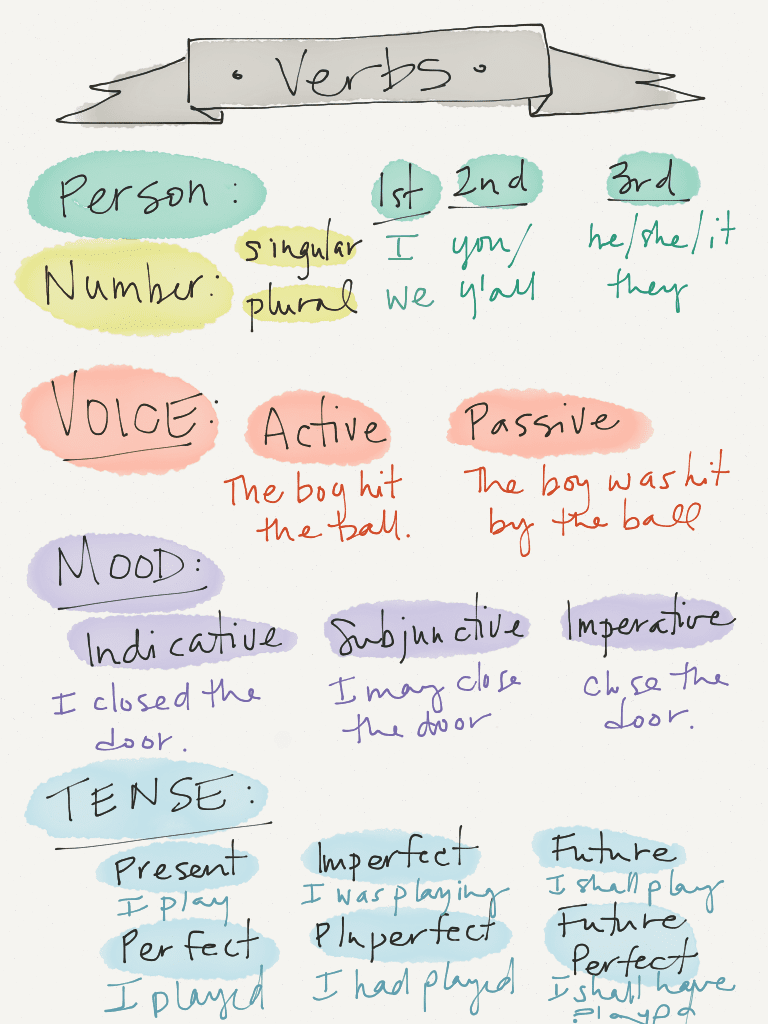
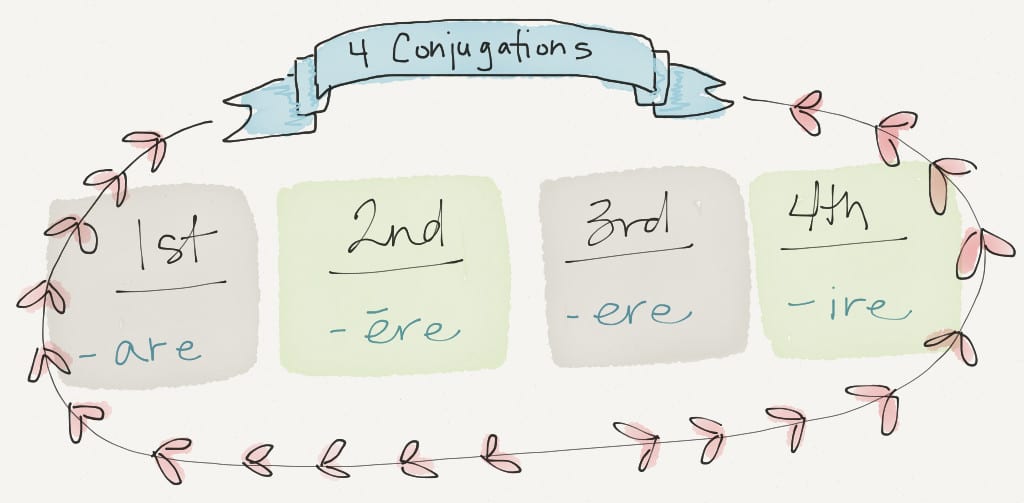
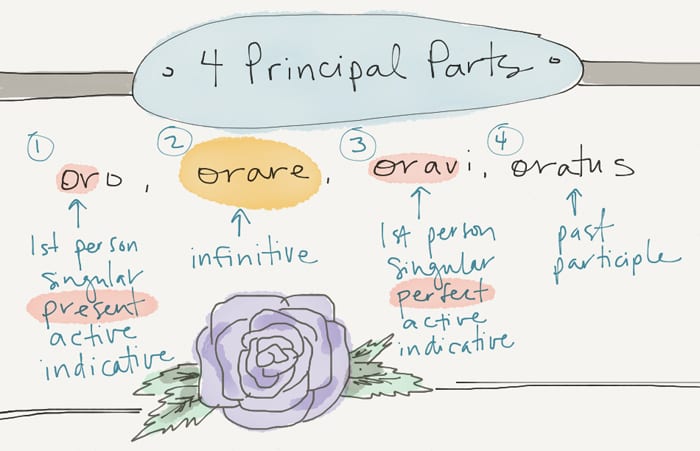
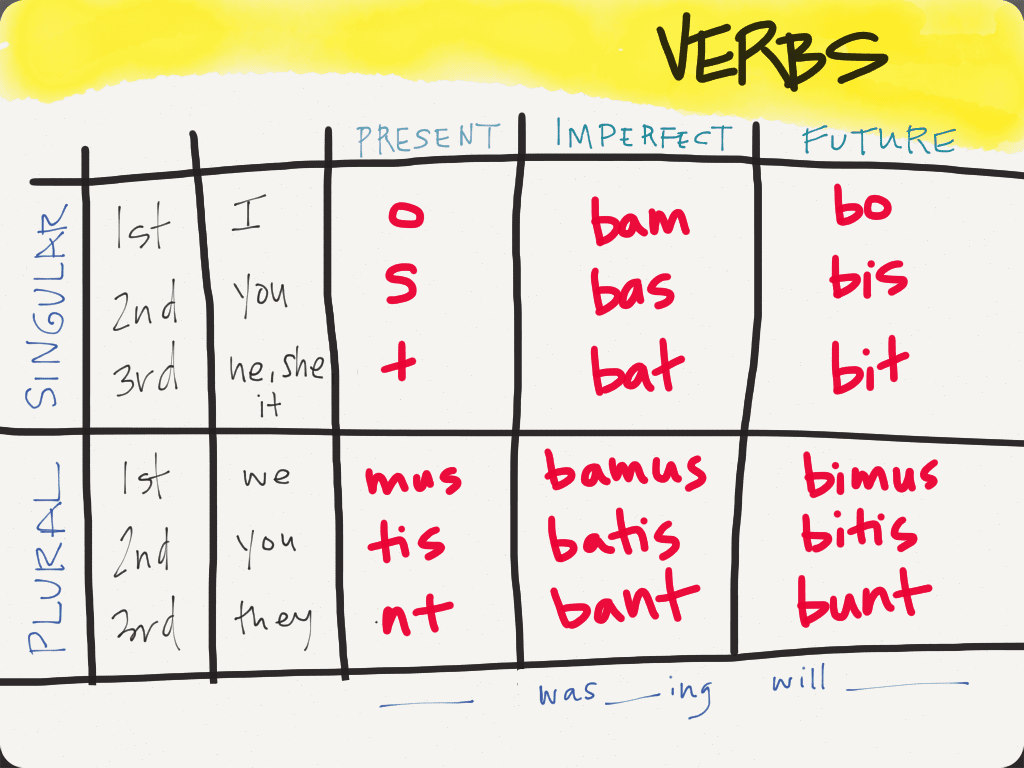
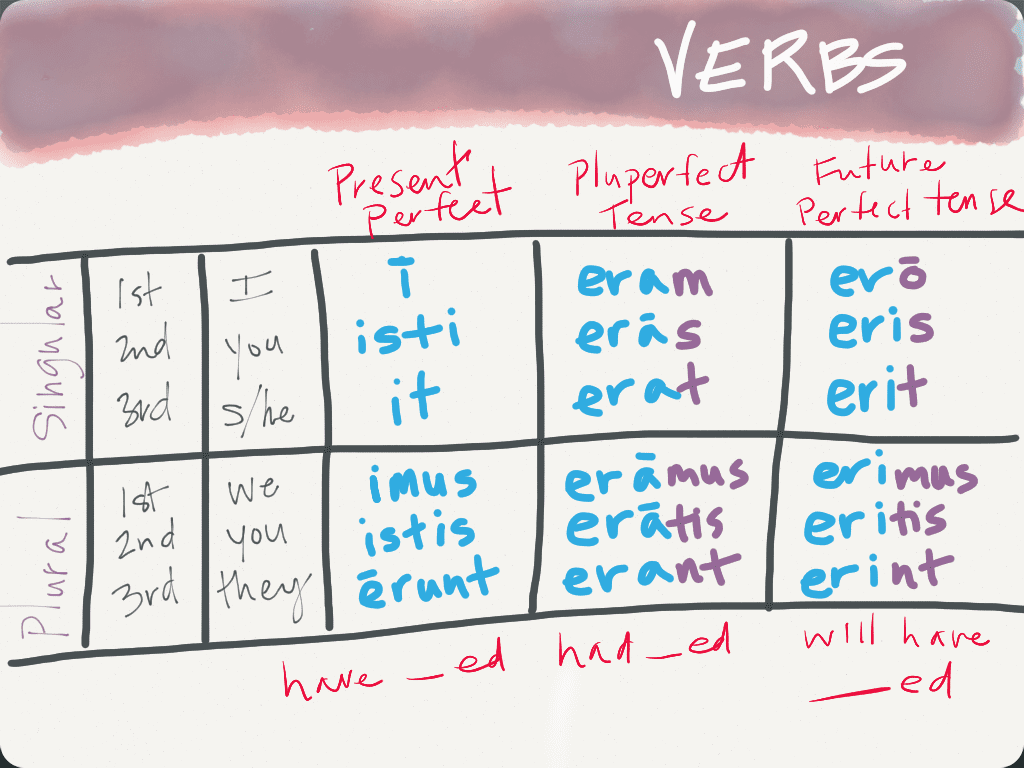
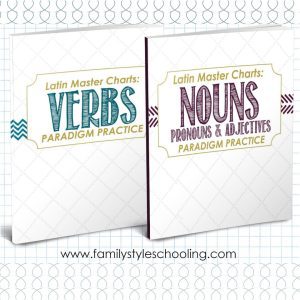




Do you have a BLANK verb conjugation chart? I see one when I googled it and found your website, but I can’t seem to locate just the blank one on your site. Thanks!
I have a verb chart bundle that has a blank page included: https://familystyleschooling.com/2015/12/07/latin-verb-conjugation-muscle-memory-conditioning/ Is this what you’re looking for?
Thanks for the link. I like those and will purchase them for my class of Latin kids to practice in class after I laminate them. I still am looking for the blank one that matches the set I see on THIS site. Do you have one for conjugating verbs that matches your teaching material?
I think I found it! It’s at the bottom of this post: https://familystyleschooling.com/2015/11/12/latin-verb-conjugations-present-stem-worksheets/
Thank you…the first time I tried that link I got a math flashcard download! Hmm Now it worked.
Your customer service equals your amazing product! So happy I found you!